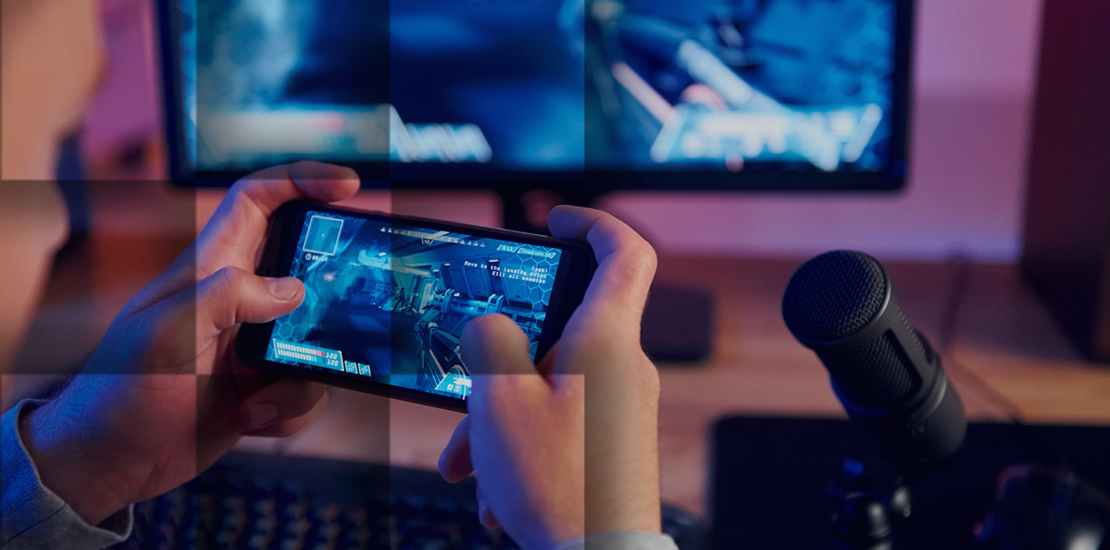- April 3, 2023
- Posted by: iXie
- Category: Game Development

Mobile gaming has grown into a multibillion-dollar industry, with millions of users spending time playing games on their smartphones and tablets. As the mobile gaming market continues to expand, mobile game developers must find ways to make their games stand out in a crowded marketplace. They must create art that is optimized for mobile devices, easy to understand, and engaging for players. All these and more are key to developing a successful game, and this article will focus mainly on tips that serve as art production solutions for developers.
We will explore various aspects of art production, including design concepts, art style, and optimization techniques. By the end of this article, you’ll have a solid understanding of how to produce high-quality art for mobile games that captivates players and sets your game apart in a competitive market. So, let’s dive in!
Contents
- 1 1. Understand the Game Design Concept
- 2 2. Embrace simplicity
- 3 3. Artwork Optimization
- 4 4. Be Consistent with Your Art Style
- 5 5. Watch the User Interface Closely
- 6 6. Test the Artwork
- 7 7. Enhance the gameplay with animation
- 8 8. Develop Acceptance Criteria
- 9 9. Select a Mobile Platform
- 10 10. Choose a Mobile Game Engine
- 11 11. Keep close tabs on the Latest Trends
- 12 Conclusion
1. Understand the Game Design Concept
To produce artwork for a mobile game, the initial step is to comprehensively grasp the game’s design and concept. This entails comprehending the game’s genre, intended audience, plot, and general theme. By having a thorough understanding of these aspects, you can develop artwork that corresponds to the game’s design and elevates the overall gameplay experience.
Suppose you are designing artwork for a puzzle game, a minimalist art style with simple shapes and clean lines will suffice as they assist players in concentrating on the gameplay. Conversely, if you are developing artwork for a role-playing game (RPG), you may prefer to employ a more complex and intricate art style, incorporating lively colors to animate the game’s world.
2. Embrace simplicity
To make your mobile game successful, it’s crucial to create artwork that is both easy to understand and fast to load. This can be achieved by using simple designs without intricate details, which will help reduce the file size of your artwork. By doing so, your game will load quickly and won’t take up too much storage space on the player’s device.
Moreover, it’s important to consider the screen size when designing artwork for mobile games. Since mobile devices typically have smaller screens than desktop computers, your artwork should be legible and easily comprehensible even on a smaller scale. This way, players will be able to fully appreciate your game’s artwork, regardless of the size of their device’s screen.
3. Artwork Optimization
Optimizing your artwork is crucial; since mobile devices have limited resources, your artwork must be lightweight and load quickly. You can accomplish this by using compressed file formats such as PNG or JPEG and minimizing the number of colors and layers in your artwork.
Another way to optimize your artwork is by creating graphics that scale efficiently. This entails designing artwork that looks great and performs well on various screen sizes and resolutions. It’s recommended to test your artwork on different devices and screen sizes to pinpoint any potential issues and ensure that your game’s graphics display flawlessly on all devices.
4. Be Consistent with Your Art Style
Achieving consistency is vital to the success of a mobile game. It’s crucial to ensure that all game elements, such as the UI, icons, characters, and environments, adhere to the same art style. Doing so will help create a cohesive and immersive gaming experience, which is essential for player engagement.
Furthermore, using a consistent art style can aid in brand recognition. If your game gains popularity, players will be able to recognize your artwork and associate it with your brand, ultimately boosting brand awareness and loyalty.

5. Watch the User Interface Closely
Any mobile game’s user interface (UI) is an essential element. The UI consists of all the graphic components of the game that players can see and use, including menus, buttons, and icons. It is crucial to make sure that your UI is simple to use and comprehend, especially for newbie gamers.
Think about each element’s size and location while creating the UI. Make sure the writing is readable and simple to read and use labels and icons that are clear and succinct. Use the same design components across the whole game since consistency is crucial for UI design.
6. Test the Artwork
Game Testing is an ongoing process that can help you refine and enhance your game’s artwork, resulting in a more polished and engaging gaming experience. Testing your artwork is a crucial step in the mobile game art production process. Conducting tests on different mobile devices can help detect any issues with the artwork, such as resolution or color problems.
It’s essential to consider the device’s screen size and resolution, as well as the game’s performance when testing your artwork. This can help pinpoint any potential areas where you can optimize your artwork further or identify improvements that need to be made to ensure seamless gameplay.
7. Enhance the gameplay with animation
Animation is an effective way to elevate your mobile game’s level of engagement and excitement. By utilizing animation, you can enhance gameplay, add special effects, and create memorable moments that players will remember.
For instance, you can incorporate animation to showcase a character jumping or executing a unique move, or to produce stunning particle effects for explosions or magical spells. The possibilities are endless with animation, so take advantage of this tool to create a truly immersive gaming experience.
Also Read: The Best 3D Art Outsourcing Studios in the Industry
8. Develop Acceptance Criteria
As user stories are developed, acceptance criteria should be created to determine when each feature or game element is considered complete. For example, acceptance criteria may state that tank fighting mechanics function as intended in 98% of test encounters.
9. Select a Mobile Platform
The choice of which platform to release your game on is closely tied to your game’s future monetization strategy and the characteristics of your target audience, including age and geographic location.
For example, older individuals tend to favor puzzles and card games, likely due to their reliance on public transportation. In contrast, younger individuals are more inclined towards adventure, shooting, and strategy games, among others. Therefore, understanding your target audience’s preferences is crucial in deciding which platform to release your game on.
10. Choose a Mobile Game Engine
Game engines are software frameworks designed to simplify the game development process. These engines typically provide tools for 2D and 3D game rendering, physics simulation, animation, visual effects, sound design, and more.
When selecting a game engine, it is essential to choose one that provides the necessary tools to bring your game idea to life and resolve any challenges you may face. For instance, if you are developing a simple, 2D game, GameMaker Studio 2 engine would be a suitable choice as it offers a robust toolkit for 2D graphics and small game development.
11. Keep close tabs on the Latest Trends
To remain relevant in the mobile gaming industry, it is crucial to stay informed about the latest trends in mobile game art as it is constantly evolving. One can stay updated by keeping an eye on popular mobile games and following industry blogs and forums.
Conclusion
Game development is complex yet rewarding. Always endeavor to examine the developer’s portfolio and ask for recommendations from prior customers before selecting a third-party partner. Keep in mind that being amazing doesn’t always necessitate developing anything from scratch. Your concept for a mobile game need only improve upon existing concepts by adding something original.
By following the tips and tricks outlined in this article, you can create art that enhances the overall player experience and makes your game stand out in the market. Remember to optimize for mobile devices, use efficient workflow management, and prioritize engaging visuals that captivate players. With these art production solutions in mind, you can take your mobile game to the next level and make it a success. So, what are you waiting for? Start creating stunning mobile game art today!

